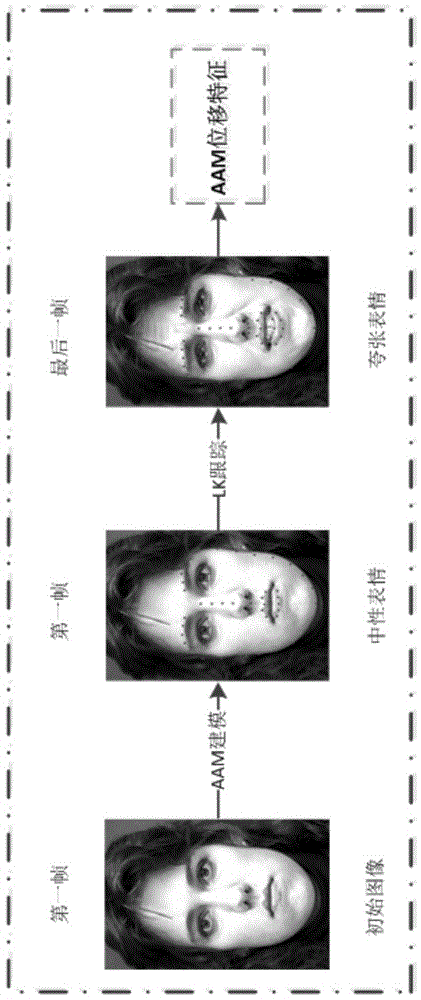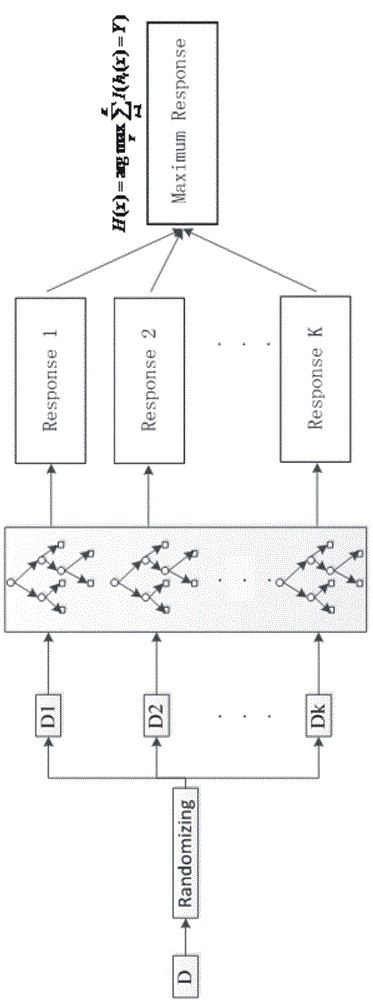Facial expression recognition method based on random forests
A facial expression recognition, random forest technology, applied in the field of facial expression recognition, can solve problems such as unsatisfactory effect, changeable, complex facial expression, etc.
- Summary
- Abstract
- Description
- Claims
- Application Information
AI Technical Summary
Problems solved by technology
Method used
Image
Examples
Embodiment Construction
[0053] A method for facial expression recognition based on random forest includes the following steps:
[0054] Step 1 AAM displacement feature extraction
[0055] AAM is based on the Active Shape Model (ASM), which was originally proposed by Edwards, Cootes, and Taylor. AAM includes two parts: shape model and texture model. The present invention uses a shape model. The shape model is defined as the coordinates of n feature points:
[0056] s=(x 1 ,y 1 ,x 2 ,y 2 ,...,X n ,y n ) T
[0057] It can be turned into a linear model:
[0058] s = s 0 + X i = 1 n p i s i
[0059] Where p i Is the shape parameter, s i It is obtained through PCA (Principal Component Analysis) dimensionality reduction on the training data. However, for calculation and tracking considerations, the present invention does not adopt the second expression mode, but adopts the first simple expression form. See the detailed process figure 2 .
[0060] Step 1.1 Select the first...
PUM
 Login to View More
Login to View More Abstract
Description
Claims
Application Information
 Login to View More
Login to View More - Generate Ideas
- Intellectual Property
- Life Sciences
- Materials
- Tech Scout
- Unparalleled Data Quality
- Higher Quality Content
- 60% Fewer Hallucinations
Browse by: Latest US Patents, China's latest patents, Technical Efficacy Thesaurus, Application Domain, Technology Topic, Popular Technical Reports.
© 2025 PatSnap. All rights reserved.Legal|Privacy policy|Modern Slavery Act Transparency Statement|Sitemap|About US| Contact US: help@patsnap.com



